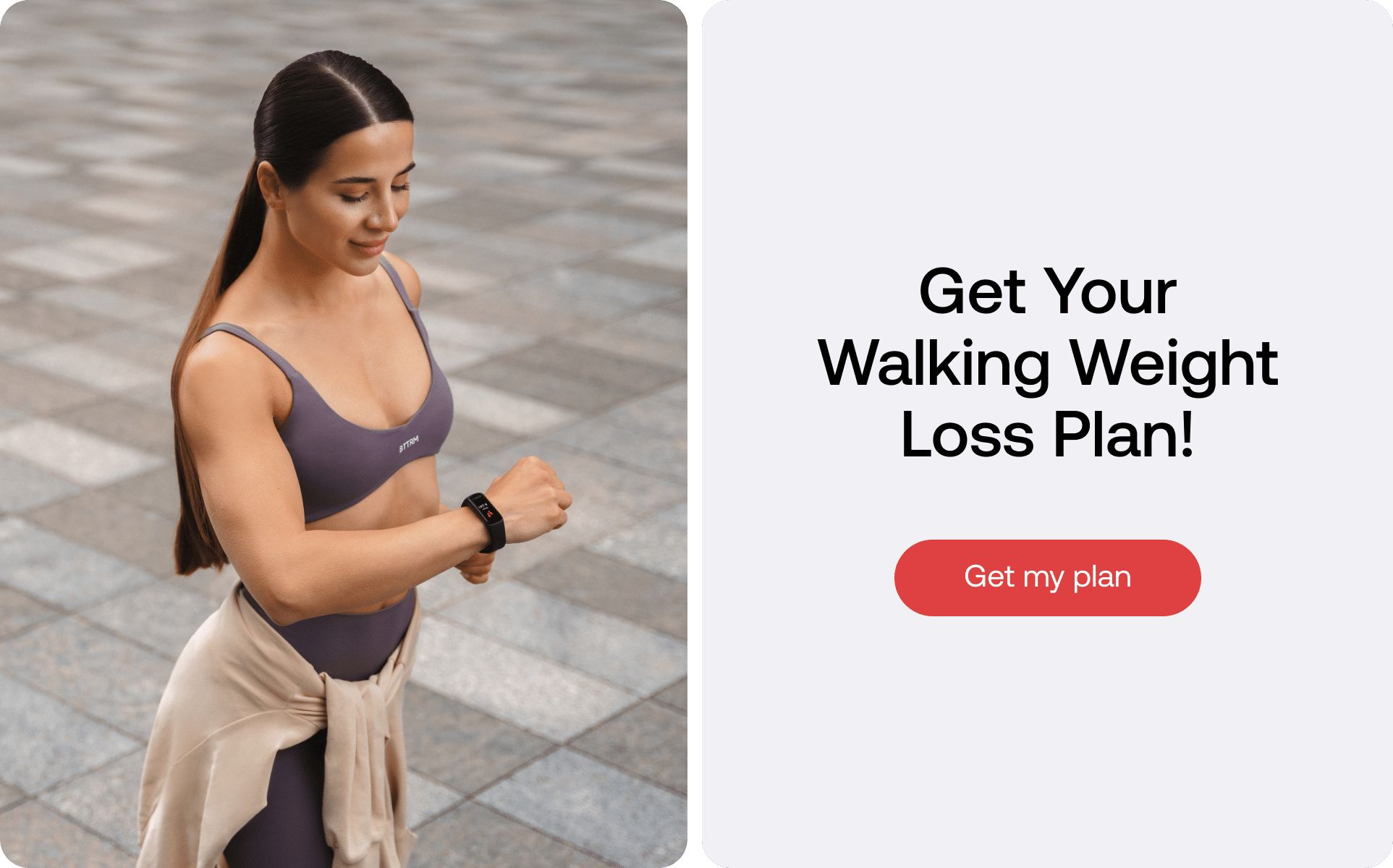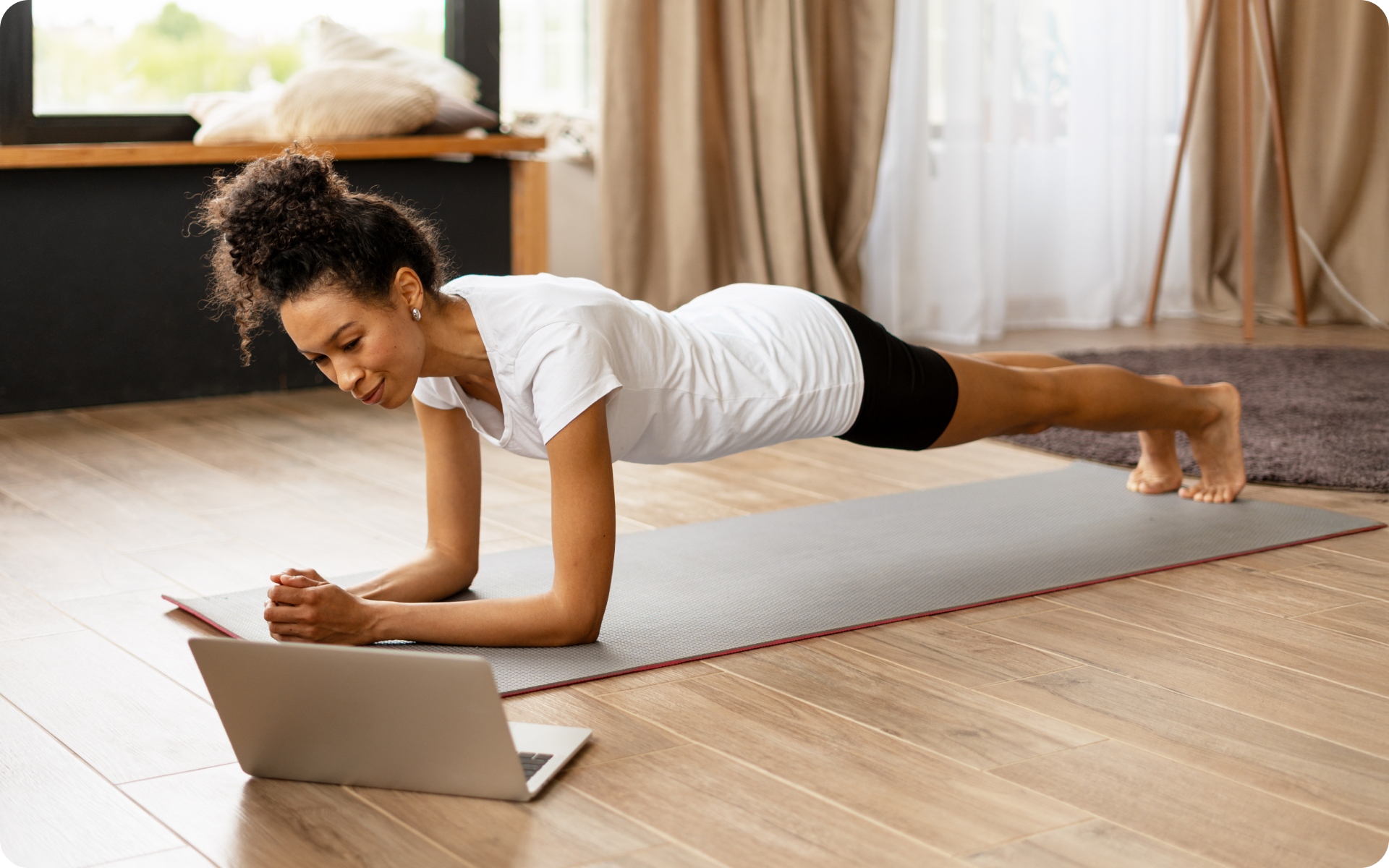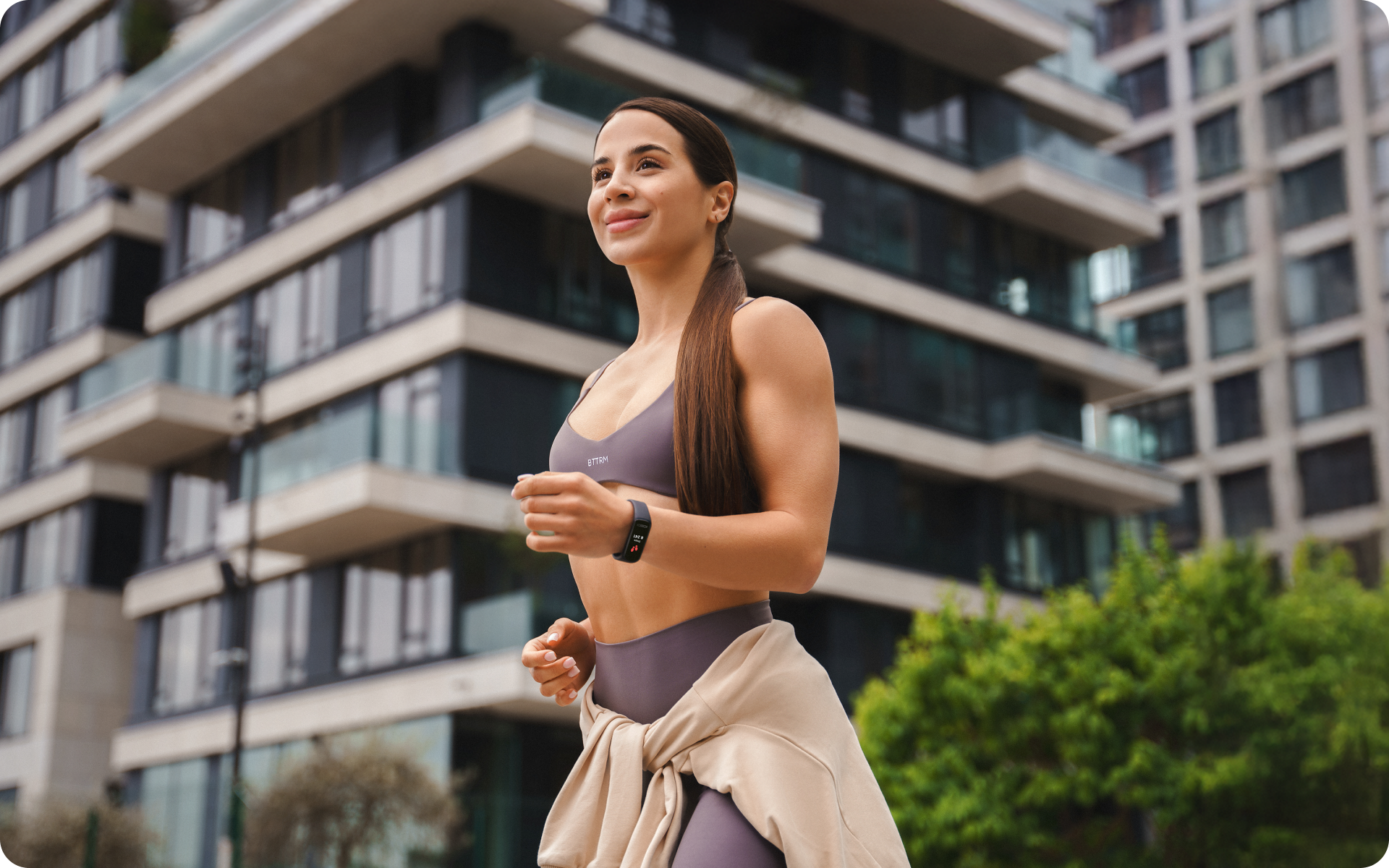Can you lose weight walking 2 miles a day? Walking is one of the easiest exercises anyone can do. However, despite its ease, many people often ignore this simple workout in favor of more complicated exercise routines that they eventually end up quitting in just a few short weeks.
If you are looking for a simple workout to do either for weight loss or just to improve your health, look no further. In today’s article we are going to outline the benefits of walking 2 miles a day, the possibility of weight loss, and even show you the tools to get you started.
What Are The Benefits Of Walking 2 Miles A Day?
The benefits of walking 2 miles a day include:
Relief from the symptoms of depression
Depression is one of the most common mental health issues faced by people all over the world (5). Studies published throughout the years – with the latest one being in 2022 – show that the prevalence of this disorder is increasing by the day and in all age groups (6, 23).
Walking is one of the activities often suggested for people who are clinically depressed and with good reason. Several studies have shown that walking can be used for the treatment of depression and depressive symptoms in people of all ages (8, 20, 25).
If you tend to let yourself off the hook, raise the white flag when things get tougher than you expected, send yourself on an unconscious binge-eating trip – BetterMe app is here to help you leave all of these sabotaging habits in the past!
Relieve stress and improve mood
Studies have shown that walking – even down the hallway at work or in school – can improve your mood and relieve stress that might be getting you down (9, 24). If you love nature, combining a walk and a serene environment will do wonders for your mood and stress levels.
Improved balance and posture
This is especially important for seniors who are prone to falling(13). Regular walking can help reduce the risk of falling and breaking a hip due to the improvements in balance and leg strength.
Improved lung function
According to the American Lung Association, basic aerobic workouts like walking and running give your lungs a workout, which helps them function at their best.
Better lung function and health means you have a larger lung capacity and thus are not always running out of breath after every small activity (30).
Can help ease chronic pain
Multiple studies have shown that gentle walks work exceptionally well to not only ease chronic pain in the elderly and other injured people, but it goes a long way to improve their quality of life too (3, 21).
Other benefits of walking 2 miles a day include improved fitness and stamina, lowering bad cholesterol while improving good cholesterol levels, improving your cardiovascular fitness and heart health, reducing your risk of diabetes, improving blood and oxygen circulation, boosting creativity and even reducing your risk of breast and colon cancer (19, 28, 1).
Weight loss
This is the easiest yet most underrated workout that has been proven to be extremely effective for weight and fat loss (7, 15, 2).
When you add walking to your routine, you help your body burn more calories than it usually does. If you keep up with walking consistently, you burn even more calories and can begin to build muscle which will lead to weight and fat loss.
Read more: The 28-Day Indoor Walking Weight Loss Challenge Explained
Walking 2 Miles A Day Weight Loss: Tools To Get You Started
You may not think that they matter, but having the right set of workout accessories goes a long way in making your workout more efficient – meaning faster fat loss – and a lower likelihood of injury while on the trail. Here are some must haves to ensure that you get the most out of your walk.
The right footwear
Sneakers generally just look like sneakers with the most obvious difference being the design. However, their differences go far beyond how cool they look – the right shoe will determine how far you can go and even whether or not you will be in pain.
According to Harvard Health, the best walking shoe should have (22)
- A low heel – bigger or chunkier heels prevent your foot from moving naturally, which increases your likelihood of tripping
- Soft cushioning, which helps relieve pressure on the foot
- Enough space in the toe box for all your toes to fit comfortably
- The perfect length – The shoe shouldn’t hug your foot. There should be at least a half an inch of space between your longest toe and the front of the shoe. Remember, feet can swell as the day goes on and after walking for long periods. If the foot fits perfectly in the shoe without the extra space, then when the foot swells, you may have discomfort
- Enough flexibility – The toe and heel of a shoe should touch when you pull them toward each other. This shows that the shoe allows for a greater range of motion for your feet.
Exercise clothes
While you do not have to have new brand-name workout clothes for your daily 2-mile walk, whichever clothing you choose should be made of the right material to ensure that you are as comfortable as possible while exercising.
The best exercise clothes are those made from fabrics such as polyester, merino wool, nylon, spandex, or polypropylene. Cotton clothes are typically not recommended while working out, especially if you sweat a lot (16).
While cotton as a fabric works well for everyday wear and hides the stench of sweat better than other fabrics (14), it is not very breathable, and its ability to absorb liquid leaves you feeling damp and sticky, which is not at all a great feeling. The same thought should be applied when choosing socks.
A foam roller
Two miles might not seem like a lot but for anyone not used to working out, your muscles may become sore. To help loosen up your muscles, get a foam roller and give yourself a massage every day after your workout to boost circulation and muscle relaxation.
Water bottle
Dehydration while working out leads to increased fatigue, dizziness, and confusion – all factors that leave you at an increased risk for fainting and falling.
Dehydration, especially during hotter months can also lead to heat exhaustion, heat stroke, seizures, and even death in extreme cases.
Avoid this by taking your water bottle with you and taking small sips throughout your 2 mile walk.
A fitness tracker
Are you concerned about how many calories can be burned walking 2 miles a day? If so, a fitness tracker should be on your next budget. While this is not a must-have, it is a great gadget to help you easily log how many calories you burn during your walk.
Earbuds/Earphones
While some people are simply okay just enjoying nature while exercising outside, other people prefer to have something else to concentrate on other than the miles ahead.
A good pair of headphones (cordless if possible) works great as they let you enjoy a great playlist, podcast or audiobook while walking your designated 2 miles.
For safety reasons, keep the volume low or keep one ear unplugged to help you be more aware of your surroundings.
How To Lose Weight Walking 2 Miles A Day
The decision to get off the couch and start walking is already a step in the right direction. But how can you ensure that your workout gives you the best results possible? Here are some expert tips:
- Walk on an incline – This increases the intensity of your workouts, which burns more calories. If you live near a hilly area turn your two-mile walk into a hike instead. If you are not close to a hill or mountains, use a treadmill and set it at an incline. You can also choose to walk up the stairs more if either of these options are not available to you.
- Increase your pace – You burn more calories when your heart beats faster. If you can, try achieving your fat-burning heart rate whenever you are out exercising.
According to Medical News Today, when you hit this rate, your body ends up burning more fat – instead of sugar and carbs – as a source of energy.
According to a review published in 1997, the optimal heart rate for walking for weight loss is any number over 70 percent (27). To calculate your maximum heart rate simply subtract your age from 220. Whether you reach this fat-burning heart rate or not, as long as your pace is faster than normal you will burn more calories. A fitness tracker is the best accessory to help you track this particular point.
- Get some weights – Adding resistance to any workout automatically means more calorie burning. While walking doesn’t look like a workout requiring weights, adding some can really boost the overall intensity of your 2-mile walk.
Some walking weights that you can invest in include wrist and ankle weights, a pair of light dumbbells, or a weighted vest.
- Fix your diet – You can’t out-exercise a bad diet. Find a weight loss diet plan that works for you and your lifestyle and stick to it. Whichever diet you choose, make sure you are eating on a calorie deficit – changing your diet won’t matter if you are still overeating/eating more calories than you are burning a day.
- Enjoy yourself – Most exercise plans fail because they feel like work. Find ways to make your daily walking routine fun for you. Make it an activity that you are always looking forward to instead of something you have to get over with as soon as possible. This might mean bringing your dog or walking with a friend.
BetterMe app is a foolproof way to go from zero to a weight loss hero in a safe and sustainable way! What are you waiting for? Start transforming your body now!
How Much Weight Can You Lose Walking 2 Miles A Day?
There isn’t a single number that encompasses everyone. The main reason behind this is that factors affecting weight loss – not just exercise – determine how many calories we burn and how much weight we lose (even when we do the same exercises).
Some of these factors include family history and genes, initial weight, race or ethnicity, age, gender, stress levels, eating habits, and even the amount of sleep you get per night (10). Walking pace and overall step count are also other factors that are said to determine how many calories you can burn from doing this exercise.
With this in mind, it’s clear to see how hard it can be to state how many calories one can burn. If you’d like to know if your routine is working, remember that healthy weight loss is equal to losing 1 to 2 pounds a week. As long as your weight is decreasing within these parameters, then you are doing a good job.
How Much Weight Can You Lose Walking 2 Miles A Day For 3 Months?
As stated above, due to the multiple factors determining weight loss per individual, it is impossible to give one number that works for everyone.
But, the Centers For Disease Control and Prevention, states that gradual and sustainable weight loss means shedding anywhere between 1 to 2 pounds a week – half a kg to 1 kg (29). Using this as the base, in a 3-month time frame, you can expect to lose anywhere between 12 pounds to 24 pounds.
Please note that any extra pounds lost during this time frame are most likely due to water weight loss and not fat loss.
Read more: Walking Treadmill Workout: Exploring the 12-3-30 Routine for Fitness Advancement
It can be. If you have been leading a more sedentary lifestyle, then managing to walk 2 miles in 30 minutes is a good achievement. However, for people who have been leading a more active lifestyle, this pace might be considered a bit slow. Remember that for healthy persons (i.e. without disease), walking speed is determined by multiple factors including age, gender, lower body strength, overall body and muscle strength, joint mobility (26), etc. So, work with what you have and aim to improve from your current baseline. Unfortunately, yes, it can be if you are getting no other steps in throughout the day. While walking 2 miles a day does have its benefits. It is still considered sedentary. According to USA Today, the average American takes 3000 to 4000 steps a day doing everyday activities. This in distance, equates to about 1.5 to 2 miles (11). The fact that walking 2 miles a day is sedentary is further confirmed by the Tudor-Locke and Bassett steps-per-day categories and classification system. According to this classification, walking less than 5000 steps a day is considered as leading a sedentary lifestyle. Low-active or physically inactive people take 5000 to 7499 steps while moderately active to very active people take 7500 to 12,500 steps a day (12, 18). Thus, if you want to lead a more active lifestyle, start with walking 4k steps a day (2 miles a day), but challenge yourself to double this number in a few months and even get up to 10k steps a day. Yes, it can. While walking is considered a full-body exercise, it mostly engages the muscles in your lower body, specifically the quadriceps, hamstrings, the calf muscles as well as the hip adductors. Your glutes and abdominal muscles also play a role in walking, albeit not as much as the muscles in the thighs and downwards. Overall toning and muscle development are dependent on current fitness level. Less active individuals will see greater improvements than already active individuals. Over time and with consistency, walking 2 miles a day will help tone your legs. However, if you’d like to quicken these results we suggest: Add an extra half mile or full mile every 3 to 4 weeks. This will ensure that you will not end up in a plateau, but will help you to continue losing fat all over the body and help gain/grow muscle, especially in the legs. If your main goal is weight loss then walk 2 miles and finish with some leg day exercises. However, if your goal is more muscle, do the leg exercises first (after a warm up of course) and then finish up with your 2-mile walk (4, 17). Yes, you can. Walking is a full-body workout that will not only help you lose belly fat but fat all over the body as well. For better and quicker results, combine your walking exercise with weight training workouts and make sure to eat on a calorie deficit. This will help increase calorie burning and muscle growth, which will give the best results. Yes, it is. As seen from the benefits section above, this incredibly underrated exercise does more than just get you out of the house. Walking 2 miles a day is a great and inexpensive weight loss strategy that does wonders for your mental health, heart health, and general well-being (1).FAQs
Is Walking 2 Miles in 30 Minutes Good?
Is Walking 2 Miles A Day Sedentary?
Can Walking 2 Miles A Day Tone My Legs?
Can I Lose Belly Fat If I Walk 2 Miles A Day?
Is Walking 2 Miles A Day Good For My Health?
The Bottom Line
Walking 2 miles a day is certainly enough for weight loss, especially for beginners. It’s easy to do, quite inexpensive and has a much lower risk of injury than many popular gym workouts.
If your goals for this year include reducing stress levels, improving your general health, losing weight, and toning your lower body, then by all means, go ahead and tackle those two miles. If you remain consistent and improve your diet, you are sure to hit your goals in no time.
DISCLAIMER:
This article is intended for general informational purposes only and does not serve to address individual circumstances. It is not a substitute for professional advice or help and should not be relied on for making any kind of decision-making. Any action taken as a direct or indirect result of the information in this article is entirely at your own risk and is your sole responsibility.
BetterMe, its content staff, and its medical advisors accept no responsibility for inaccuracies, errors, misstatements, inconsistencies, or omissions and specifically disclaim any liability, loss or risk, personal, professional or otherwise, which may be incurred as a consequence, directly or indirectly, of the use and/or application of any content.
You should always seek the advice of your physician or other qualified health provider with any questions you may have regarding a medical condition or your specific situation. Never disregard professional medical advice or delay seeking it because of BetterMe content. If you suspect or think you may have a medical emergency, call your doctor.
SOURCES:
- 15 Major Benefits of Walking, According to Experts (2023, prevention.com)
- A Meta-Analysis of Pedometer-Based Walking Interventions and Weight Loss (2008, ncbi.nlm.nih.gov)
- A randomized trial of walking versus physical methods for chronic pain management (1997, pubmed.ncbi.nlm.nih.gov)
- Cardio Before Weight Lifting May Help Boost Muscle (2021, nytimes.com)
- COMMON MENTAL HEALTH DISORDERS (2011, ncbi.nlm.nih.gov)
- Depression as a disease of modernity: explanations for increasing prevalence (2012, ncbi.nlm.nih.gov)
- Dose-response effect of walking exercise on weight loss. How much is enough? (2002, pubmed.ncbi.nlm.nih.gov)
- Effects of a six-month walking intervention on depression in inactive post-menopausal women: a randomized controlled trial (2015, pubmed.ncbi.nlm.nih.gov)
- Experimental effects of brief, single bouts of walking and meditation on mood profile in young adults (2018, ncbi.nlm.nih.gov)
- Factors Affecting Weight & Health (2023, niddk.nih.gov)
- How many miles should you walk a day? The truth about step counts (2023, usatoday.com)
- How many steps/day are enough? Preliminary pedometer indices for public health (2004, pubmed.ncbi.nlm.nih.gov)
- Improve your balance by walking (2023, health.harvard.edu)
- Microbial Odor Profile of Polyester and Cotton Clothes after a Fitness Session (2014, ncbi.nlm.nih.gov)
- Moderate Walking Enhances the Effects of an Energy-Restricted Diet on Fat Mass Loss and Serum Insulin in Overweight and Obese Adults in a 12-Week Randomized Controlled Trial (2017, pubmed.ncbi.nlm.nih.gov)
- Polyester, nylon, wool and more: The fabrics to look for in your workout clothes (2020, cnet.com)
- Should You Do Cardio Before or After Lifting Weights? Trainers Explain (2023, prevention.com)
- Step Counting: A Review of Measurement Considerations and Health-Related Applications (2017, ncbi.nlm.nih.gov)
- Study: Even a Little Walking May Help You Live Longer (2017, cancer.org)
- The Benefits of Exercise for the Clinically Depressed (2004, ncbi.nlm.nih.gov)
- The effectiveness of walking versus exercise on pain and function in chronic low back pain: a systematic review and meta-analysis of randomized trials (2019, pubmed.ncbi.nlm.nih.gov)
- Tips for choosing walking shoes (2022, health.harvard.edu)
- Trends in U.S. Depression Prevalence From 2015 to 2020: The Widening Treatment Gap (2022, ncbi.nlm.nih.gov)
- Walking facilitates positive affect (even when expecting the opposite) (2016, pubmed.ncbi.nlm.nih.gov)
- Walking for depression or depressive symptoms: A systematic review and meta-analysis (2012, sciencedirect.com)
- Walking Speed (n.d., sciencedirect.com)
- Walking to health (1997, pubmed.ncbi.nlm.nih.gov)
- Walking vs running for hypertension, cholesterol, & diabetes risk reduction (2014, ncbi.nlm.nih.gov)
- What is healthy weight loss? (2020, cdc.gov)
- Your lungs and exercise (2016, ncbi.nlm.nih.gov)












